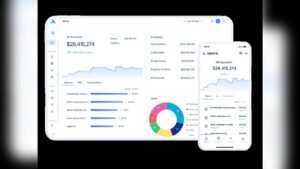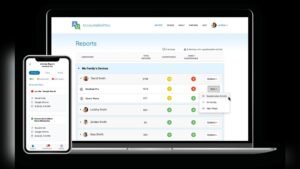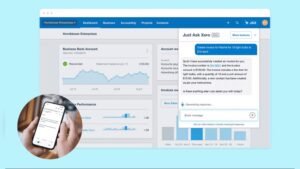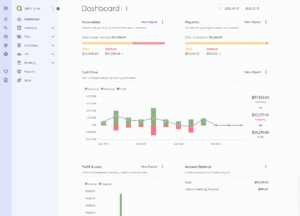Email marketing can grow your business. It’s an effective tool for engaging customers.
Email marketing helps build relationships, boost sales, and increase brand awareness. Businesses of all sizes benefit from it. Sending regular, targeted emails keeps your audience informed. It can promote new products, offer discounts, and share valuable content. By using email marketing, you can reach customers directly in their inbox.
This personal touch encourages loyalty and repeat business. Understanding how to use email marketing effectively is crucial. It involves crafting compelling messages, segmenting your audience, and analyzing results. This blog will guide you through the process, showing you how to leverage email marketing to grow your business. Let’s explore the strategies and techniques to make your email campaigns successful.
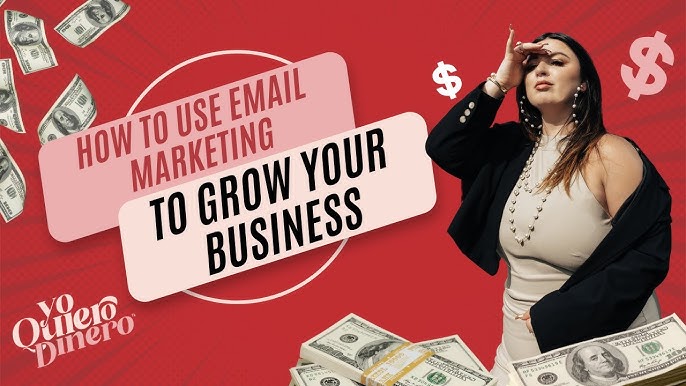
Credit: www.youtube.com
Introduction To Email Marketing
Email marketing is a powerful tool for growing your business. It involves sending emails to potential and current customers. These emails can include promotions, updates, or educational content. The goal is to build relationships, inform, and drive sales.
Many businesses use email marketing because it is cost-effective. It allows direct communication with your audience. Emails can be personalized to meet the needs of different segments of your audience. This makes email marketing a valuable strategy for business growth.
Importance Of Email Marketing
Email marketing is essential for several reasons. It helps in maintaining direct contact with your customers. Unlike social media, emails land directly in the recipient’s inbox. This makes sure your message is seen. Email marketing also allows for targeted communication. You can segment your audience and send tailored messages. This increases the chances of engagement.
Emails are also a great way to keep your audience informed. You can share updates about new products, services, or events. This keeps your business top-of-mind for your customers. Email marketing can also drive traffic to your website. By including links in your emails, you encourage readers to visit your site. This can lead to more sales and conversions.
Benefits For Businesses
Email marketing offers many benefits for businesses. One significant advantage is cost-effectiveness. It is cheaper than many other marketing methods. This makes it ideal for small businesses with limited budgets.
Another benefit is the ability to measure results. You can track open rates, click-through rates, and conversions. This data helps you understand what works and what doesn’t. Adjust your strategy based on these insights for better results.
Email marketing also helps build customer loyalty. Regular communication keeps your audience engaged. Share valuable content, and they will see your business as a trusted source. This can lead to repeat business and referrals.
Lastly, email marketing can be automated. Automation saves time and ensures consistency. Set up automated welcome emails, follow-ups, and newsletters. This keeps your audience engaged without extra effort.
Building An Email List
Building an email list is essential for effective email marketing. Collect subscribers to share updates and promotions. Engage your audience to grow your business.
Building an Email List Creating a robust email list is crucial for effective email marketing. It’s not just about gathering as many email addresses as possible. It’s about building a list of engaged subscribers who are genuinely interested in what your business offers.Effective Signup Forms
An effective signup form is the first step in building your email list. Keep it simple and straightforward. Use clear and concise language. You want to make it easy for people to understand what they are signing up for. For instance, my friend’s local bakery saw a significant increase in subscribers after simplifying their form to just ask for an email address. Place your signup form strategically. Don’t just hide it in the footer of your website. Include it in your blog posts, pop-ups, and landing pages. Every time I visit a new site, I check if they have a signup form visible. If it’s easy to find, I’m more likely to subscribe.Incentives For Subscribers
People need a reason to subscribe to your email list. Offering incentives can be a powerful motivator. Consider offering exclusive content, discounts, or a free resource. When I started my newsletter, I offered a free eBook to new subscribers. It significantly boosted my subscriber count. Make sure the incentive aligns with your business. If you run an online store, offering a discount or exclusive deals can be very effective. Ask yourself, what would make you subscribe? Would a special offer entice you? Use that insight to craft your incentives. Building an email list takes time and effort. But with effective signup forms and attractive incentives, you can grow your list with engaged and interested subscribers. What strategies have worked for you in building your email list? Share your thoughts and experiences.Segmenting Your Audience
Segmenting your audience is a crucial strategy in email marketing to ensure that your messages resonate with the right people. By dividing your audience into specific groups, you can tailor your content to meet their unique needs and preferences. This approach increases the relevance of your emails, leading to higher engagement rates and ultimately growing your business.
Demographic Segmentation
Demographic segmentation involves categorizing your email list based on characteristics such as age, gender, income, education, and occupation. This data helps you understand who your audience is and what they might be interested in.
Consider a clothing store that sends different email campaigns to men and women. Men might receive content about the latest men’s fashion trends, while women get updates on new arrivals in women’s apparel. By doing this, you ensure that each group receives information that is pertinent to them.
To gather demographic data, you can use sign-up forms where subscribers provide this information. Always make sure to ask only for the details you really need to keep the process simple for your users.
Behavioral Segmentation
Behavioral segmentation is all about understanding how your audience interacts with your brand. This can include their purchase history, website activity, and email engagement. By analyzing these behaviors, you can create highly personalized email campaigns.
Imagine you run an online bookstore. You notice that a segment of your audience frequently purchases mystery novels. You could send them an email highlighting new releases in that genre, offering a special discount for their next purchase.
Tracking tools and analytics can help you collect this data. Use it to craft messages that speak directly to your audience’s interests and actions. It’s like having a conversation with someone who shares your passion for the same topics.
By segmenting your audience based on demographics and behavior, you can make your email marketing more effective. How do you plan to use segmentation to enhance your next email campaign?
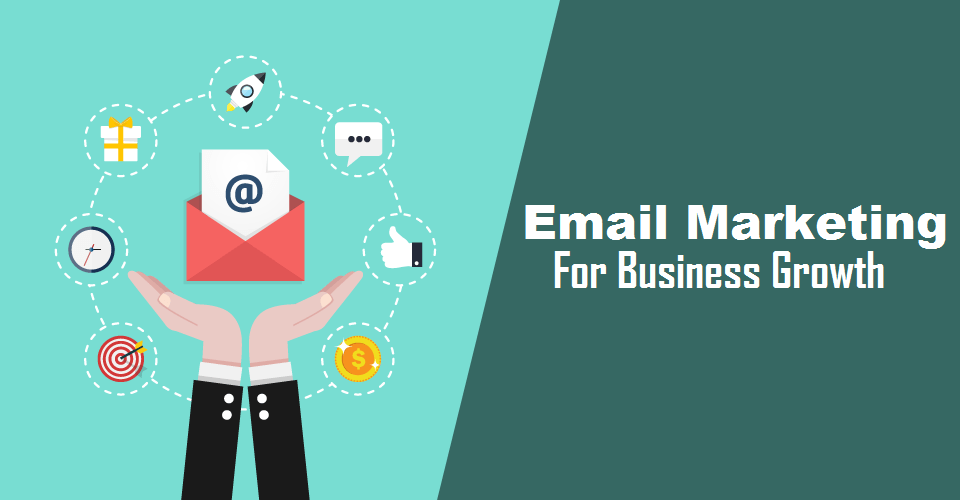
Credit: 360hub.club
Crafting Engaging Content
Email marketing can help grow your business by reaching customers directly. Share valuable content, promote offers, and build strong relationships. Engage your audience with personalized messages.
In the world of email marketing, crafting engaging content is essential. You want your audience to open your emails and take action. Let’s dive into how you can do that effectively.Writing Compelling Subject Lines
Your subject line is the first thing your reader sees. It needs to grab attention immediately. Keep it short and to the point—aim for 5-7 words. Use action words that excite curiosity. Instead of “Newsletter for October,” try “Unlock October’s Secrets!” Personalize your subject lines. Include the recipient’s name or reference their recent activity. “John, your exclusive offer inside!” sounds more inviting than a generic greeting.Creating Valuable Content
Your content should provide value. Think about what your audience needs or what problem they are trying to solve. Break up text with bullet points and subheadings. This makes your emails easier to read. Readers can quickly scan for information. Include a clear call-to-action. What do you want your readers to do? Make it obvious and simple. “Download your free guide now” is direct and actionable. Share insights or tips that can’t be found elsewhere. If you recently attended a conference, share a key takeaway. This builds your authority and keeps readers engaged. Encourage feedback. Ask questions that invite responses. “What’s your biggest challenge with email marketing?” This not only engages your audience but gives you valuable insights into their needs. Remember, the goal is to build a relationship with your readers. Make your emails feel personal and valuable. This way, your audience will look forward to your messages and take action. Are you ready to transform your email marketing strategy? Start crafting content that captivates and converts today.Designing Eye-catching Emails
Designing eye-catching emails is crucial for capturing your audience’s attention and driving engagement. A well-designed email not only looks professional but also makes your content more accessible and digestible. Let’s explore how you can create visually appealing emails that resonate with your subscribers.
Best Practices For Layout
The layout of your email plays a significant role in how your message is perceived. Start with a clean and simple design. A cluttered email can overwhelm your readers and lead them to click away.
Use a single-column layout for better readability on mobile devices. Make sure to keep your text concise and to the point. Break up large chunks of text with headings and bullet points.
Ensure your call-to-action (CTA) stands out. Place it above the fold so readers don’t have to scroll to find it. Use contrasting colors to make your CTA button pop.
Incorporating Visuals
Visual elements can make your emails more engaging. Use high-quality images that are relevant to your content. Avoid using too many images, as this can slow down loading times.
Consider using GIFs to add a dynamic element to your emails. They can be great for showcasing products or demonstrating features. Just make sure they don’t distract from your main message.
Don’t forget about branding. Include your logo and use colors that match your brand identity. This creates a cohesive look and helps with brand recognition.
Think about the last email that caught your eye. What made it stand out? Was it the clear layout or the striking visuals? Apply these insights to your own emails, and watch your engagement rates soar. What strategies have you found effective for designing eye-catching emails? Share your thoughts in the comments below!
Automating Your Campaigns
Automating your email marketing campaigns can save time and increase efficiency. It helps reach a larger audience with less effort. Automated emails can nurture leads, welcome new subscribers, and re-engage inactive users. By setting up automated workflows, businesses can ensure timely and relevant communication.
Setting Up Autoresponders
Autoresponders are pre-written emails sent automatically at a specific time. They can welcome new subscribers, confirm orders, or follow up after purchases. Start by identifying the types of emails you need. Use an email marketing platform to create and schedule these messages. Ensure the content is relevant and provides value to the recipient.
Personalization Techniques
Personalization makes your emails feel more relevant. Use the recipient’s name in the subject line or email body. Segment your audience based on their behavior or preferences. Send tailored content that matches their interests. This can increase engagement and build stronger relationships.
Analyzing Performance Metrics
Email marketing can be a powerful tool to grow your business, but how do you know if it’s really working? Analyzing performance metrics is key to understanding the impact of your email campaigns. By closely examining specific metrics, you can make informed decisions that drive better results.
Open And Click-through Rates
The open rate tells you how many people opened your email. A high open rate indicates that your subject line was compelling and your audience is engaged. On the other hand, a low open rate might suggest that your subject lines need improvement or your emails are landing in the spam folder.
Click-through rate (CTR) measures how many people clicked on links within your email. This metric shows how effective your email content is at driving action. A low CTR could mean that your call-to-action (CTA) isn’t clear or your content isn’t resonating with your audience.
To improve these rates, experiment with different subject lines, personalize your emails, and ensure your content is valuable to your readers. What changes can you make to increase engagement in your next email campaign?
Conversion Tracking
Conversion tracking goes a step further by measuring how many recipients took a desired action after clicking through your email. This could be making a purchase, signing up for a webinar, or downloading a resource. By tracking conversions, you can directly link your email efforts to revenue and business growth.
Use tools like Google Analytics to set up conversion goals and track these actions. This will give you a clear picture of your email marketing ROI. For example, if you notice a high click-through rate but low conversions, it may be time to revisit your landing page or offer.
Regularly review your conversion data to identify patterns and areas for improvement. Are your emails driving the results you want, or is there a gap between clicks and conversions?
By focusing on these key performance metrics, you can fine-tune your email marketing strategy and achieve greater success. Don’t just send emails—analyze them, learn from them, and improve them.
Optimizing Campaigns For Better Results
Successful email marketing isn’t just about sending out emails. It’s about refining and optimizing every campaign to achieve the best results. By focusing on key strategies like A/B testing and improving deliverability, you can significantly enhance your email marketing efforts. Let’s dive into these strategies to understand how they can help you grow your business.
A/b Testing Strategies
A/B testing, also known as split testing, is a powerful way to optimize your email campaigns. This involves sending two variations of an email to a small segment of your audience to see which performs better. Once you identify the winning version, you can send it to the rest of your list.
Start by testing one element at a time. This could be the subject line, email copy, call-to-action, or even the images used. For instance, you might test whether a more casual subject line gets a higher open rate compared to a formal one.
Analyze the results carefully. Look at metrics like open rates, click-through rates, and conversion rates. These insights will help you understand what resonates with your audience and tailor future emails accordingly.
Improving Deliverability
Even the best-crafted emails are useless if they don’t reach your audience’s inbox. That’s why improving email deliverability is crucial. Start by ensuring your email list is clean and up-to-date. Remove inactive subscribers and avoid purchasing email lists, as they often contain unverified addresses.
Use a reputable email service provider (ESP) that has strong relationships with internet service providers (ISPs). This can help ensure your emails are not flagged as spam. Also, authenticate your emails using SPF, DKIM, and DMARC protocols. This adds a layer of trust and improves deliverability.
Engage your subscribers regularly. If your audience expects and looks forward to your emails, ISPs will notice this engagement and are less likely to send your emails to the spam folder. Ask yourself: how can you make your emails more valuable and relevant to your audience?
By continually optimizing your campaigns through A/B testing and ensuring high deliverability, you’re setting a strong foundation for growing your business through email marketing. What strategies will you implement first to see better results?
Compliance And Best Practices
Email marketing is a powerful tool for growing your business. But, it’s crucial to follow compliance and best practices to ensure your efforts are effective and legal. Ignoring these can lead to penalties or your emails ending up in the spam folder.
Understanding Gdpr
GDPR, or General Data Protection Regulation, is a set of rules designed to protect personal data in the EU. It’s essential to understand these rules, even if your business isn’t based in the EU.
One key aspect is obtaining explicit consent from your subscribers. You need clear, unambiguous consent before sending marketing emails. Use checkboxes on your sign-up forms that are not pre-ticked, so the user makes an active choice.
Also, provide an easy way for users to withdraw consent. Every email should have a clear unsubscribe link. This isn’t just good practice; it’s the law under GDPR.
Avoiding Spam Filters
Getting past spam filters is another critical aspect of email marketing. If your emails are flagged as spam, your audience will never see them.
First, avoid spammy language like “Free,” “Buy now,” or “Limited time offer.” These trigger spam filters. Instead, use engaging language that provides value.
Second, maintain a clean email list. Regularly remove inactive subscribers. This improves your engagement rate and reduces the chances of being flagged as spam.
Lastly, ensure your email design is professional. Use a proper balance of text and images. A well-designed email is more likely to reach the inbox.
Are you following these practices in your email marketing? Implementing these steps can make a significant difference in your email deliverability and compliance. Don’t let your efforts go to waste; make sure your emails are seen and appreciated by your audience.
Case Studies And Success Stories
Discover how businesses grow using email marketing strategies. Case studies show increased customer engagement and higher sales. Success stories highlight effective campaigns boosting growth.
Email marketing can transform your business. But don’t just take my word for it. Real-life examples showcase how businesses have thrived through well-executed email campaigns. These case studies and success stories offer invaluable lessons.Successful Email Campaigns
Take XYZ Company. They launched a targeted email campaign to promote a new product line. Within a month, they saw a 25% increase in sales. What made their campaign successful? They segmented their audience. Each email was personalized, addressing the recipient’s specific needs. Another great example is ABC Startup. They used a series of welcome emails to onboard new customers. Their retention rate increased by 40%. Why did this work? They provided value upfront. Offering exclusive tips and resources made new users feel special.Lessons Learned
From these stories, a few key lessons emerge. First, know your audience. Personalization isn’t just a buzzword; it’s a necessity. Second, timing is crucial. XYZ Company sent emails at peak engagement times. ABC Startup’s welcome series started immediately after sign-up. And lastly, content is king. Every email should offer something valuable. It could be a discount, information, or even a simple thank you. Have you tried any of these strategies in your email marketing? If not, what’s stopping you? Real-world examples show that email marketing works. So why not apply these lessons to grow your own business?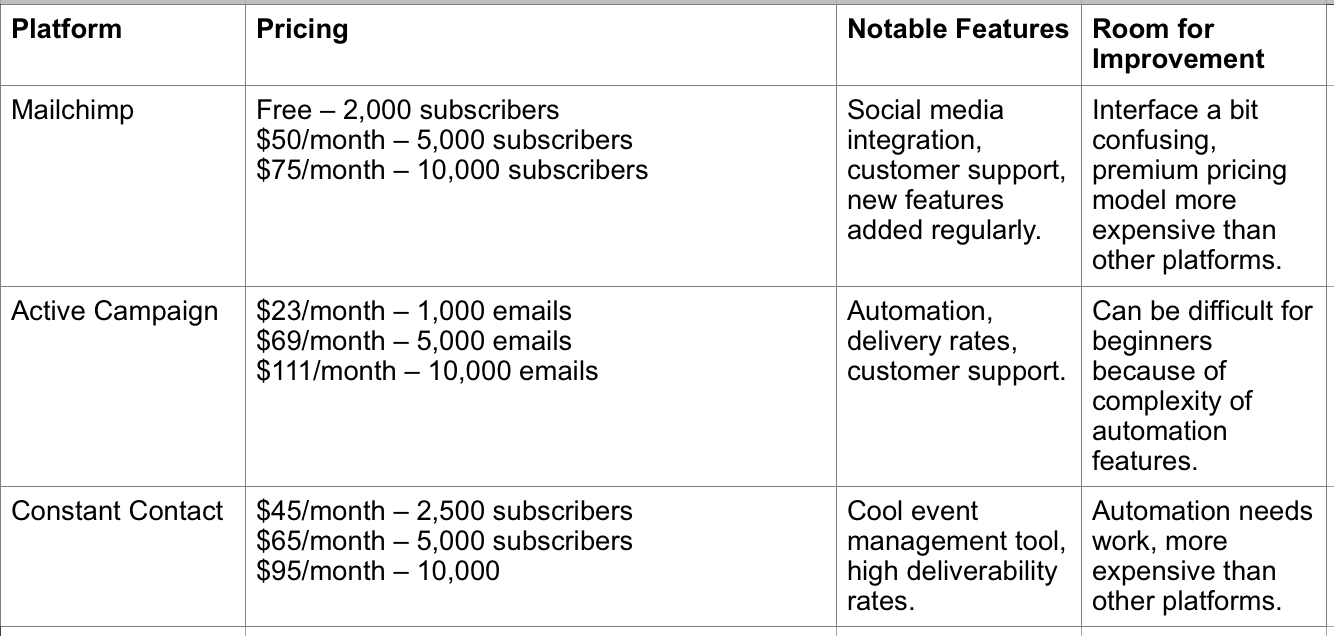
Credit: www.ownr.co
Frequently Asked Questions
How Can Email Marketing Help A New Business To Grow?
Email marketing helps new businesses grow by building brand awareness, nurturing leads, and driving sales through targeted campaigns. It enhances customer engagement, boosts conversion rates, and provides valuable insights for refining strategies.
What Is The 80 20 Rule In Email Marketing?
The 80/20 rule in email marketing means 80% of content should be valuable, informative, and engaging, while 20% can be promotional. This balance helps maintain subscriber interest and reduces unsubscriptions.
What Are The 5 T’s Of Email Marketing?
The 5 T’s of email marketing are Targeting, Timing, Testing, Tracking, and Trust. These elements help optimize email campaigns.
How Much Is A 1000 Email List Worth?
The value of a 1000 email list depends on factors like engagement and niche. Typically, it ranges from $100 to $500. Quality matters most.
Conclusion
Email marketing helps grow your business by reaching a wider audience. It builds strong customer relationships and encourages repeat sales. With clear, engaging content, your emails can stand out. Consistency is key. Regular updates keep your audience informed and interested.
Track your email performance to see what works best. Adjust your strategy based on data. Remember, email marketing is a powerful tool when used effectively. Keep your messages clear and concise. Make your audience feel valued. This will lead to long-term success.
Start today and see your business grow.

